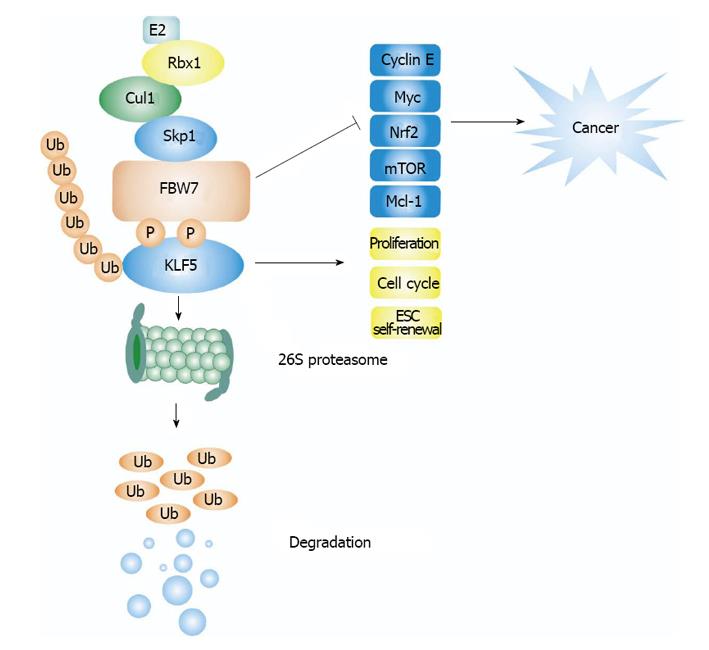Copyright
©2014 Baishideng Publishing Group Inc.
World J Biol Chem. May 26, 2014; 5(2): 216-223
Published online May 26, 2014. doi: 10.4331/wjbc.v5.i2.216
Published online May 26, 2014. doi: 10.4331/wjbc.v5.i2.216
Figure 1 Regulation of gene expression by Krüppel-like factor 5.
VEGF: Vascular endothelial growth factor; MCP-1: Monocyte chemoattractant protein-1; NK-κB: Nuclear factor κB; MMP-9: Matrix metalloproteinase-9; PAI-1: Plasminogen activator inhibitor-1; iNOS: Inducible nitric oxide synthase.
Figure 2 A model for FBW7 mediated Krüppel-like factor 5 degradation.
SCFFBW7 recognizes KLF5 via conserved Cdc4 phospho-degron (CPD) in KLF5, GSK3 phosphorylates the threonine of the CPD, which facilitates the degradation of KLF5. FBW7 plays an important role in tumor suppression via targeting numerous oncoproteins for degradation, such as Myc, cyclin E, mammalian target of rapamycin (Mtor), Mcl-1, and so on. KLF5 has an important role in regulating cellular functions, including promoting cell proliferation, cell cycle, and embryonic stem cell (ESC) self-renewal. FBW7 promotes KLF5 ubiquitination and degradation through 26S proteasome. KLF: Krüppel-like factor.
- Citation: Luan Y, Wang P. FBW7-mediated ubiquitination and degradation of KLF5. World J Biol Chem 2014; 5(2): 216-223
- URL: https://www.wjgnet.com/1949-8454/full/v5/i2/216.htm
- DOI: https://dx.doi.org/10.4331/wjbc.v5.i2.216














